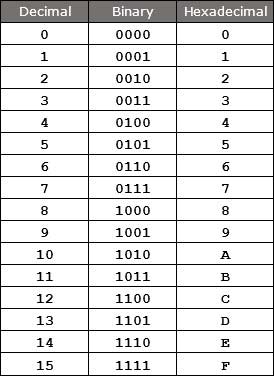IPv6
- IPv6 addresses are 128-bit* Layer 3 addresses that are split into eight 16-bit fields called hextets
- Each field is composed of two hexadecimal that range from 0-F (0-9, A-F)
- 0 - 15 in decimal
- 0000 - 1111 in Binary
- Addresses can be shortened by omitting leading 0s and summarizing one group of contiguous 0s as "::"
- For example, these addresses are the same
- 2001:0DB8:0000:0000:0001:0000:0000:0001
- 2001:DB8:0:0:1:0:0:1
- 2001:DB8:0:0:1::1
IPv6 Multicast Address Scopes - IANA
- IPv6 addresses use 128-bit addresses split into 8 16-bit fields
- Each field contains 4 characters that range from 0-9 and A-F
-

- The fields are called hextets, pieces, or quartets (but are technically hexadectets)
- Addresses can be shortened by removing leading and contiguous Zeros
- Only one set of contiguous Zeros can be shorted to "::"
- These addresses are the same:
- 2001:0DB8:0000:0001:0000:0000:0000:0001
- 2001:DB8:0:1:0:0:0:1
- 2001:DB8:0:1::1
IPv6 Address types
- Global Unicast - 2000::/3
- Global Unicast addresses are assigned to an individual host and can have global reachability (unless blocked)
- Internet authorities assign blocks from the overall 2001::/3 range to organizations
- A common assignment for a company is a /48 block, e.g. 2001:2:3::/48
- Addresses assigned to individual hosts should use a /64 mask
- This splits the address in half; 4 hextets for the network ID, 4 hextets for the host address
- 64 host bits = 18.44 Quintillion hosts per subnet
- This leaves 16 bits for companies to use for subnetting
- 16 bits = 16,535 possible subnets
- X:X:X | X | X:X:X:X
- Company | Subnet | Host
- Unique Local - fd00::/8
- They are equivalent to IPv4's Private address ranges
- They are not globally routable
- Uses the range fd00::/8 to assign completely unique addresses to devices
-
 (source: Unique local address - Wikipedia)
(source: Unique local address - Wikipedia)
- The Global ID is a 40-bit Random hexadecimal string
- The subnet ID is 16-bits long, and assigned by the administrator
- The interface ID is 64-bits long and unique to each device
- It can either be stateful (manually configured) or stateless with EUI-64 (automatically generated) with
- Link Local - FE80::/10
- These addresses are required and automatically created, and are only valid on the direct link it is connected to.
- It is required for NDP and other
Unicast/Multicast/Anycast Summary
- Unicast
- Global Unicast
- 2000::/3
- Binary 0010 or 001
- Unique Local
- FD00::/8
- Binary 1111 1101
- Link Local
- FE80::/10
- Binary 1111 1110
- Anycast
- Packets sent to an "Anycast" address are routed to the nearest device with that "Anycast" address associated with it.
- e.g., if you had a network with multiple authentication servers across the globe that were peered and used the same anycast address.
- Multicast
- FF00::/8
- First two hextets are always 1111 1111 (FF)
- Third hextet are flags (currently all set to 0)
- fourth hextet defines the scope
- 1: Interface-local
- 2: Link-local
- 5: Site-local
- 8: Organization-local
- 14: Global scope
- The remaining bits are used in the group ID, which identifies the recipient
- FF02::1 = All nodes on the local network segment
- FF02::2 = all routers on the local network segment
IPv6 Known Prefixes
| Network |
Purpose |
| 2001:db8::/32 |
Documentation prefix used for examples |
| ::1 |
Localhost |
| Fc00::/7 |
Unique Local addresses (ULA) - also known as "Private" IPv6 addresses |
| Fe80::/10 |
Link Local addresses, only valid inside a single broadcast domain |
| 2001::/16 |
Global Unique Addresses (GUA) - Routable IPv6 addresses |
| Ff00::/12 |
Multicast Addresses |
- Well known Multicast Addresses
| Address |
Purpose |
| Ff02::1 |
All IPv6 devices |
| Ff02::2 |
All IPv6 [[Router]]]]]]]] |
| Ff02::5 |
All OSPFv3 [[Router]]]]]]]] |
| Ff02::a |
All EIGRP (IPv6) [[Router]]]]]]]] |
| Ff05::1:3 |
All DHCP servers |
OSI or TCP/IP Layer
CCNA Exam Topic
#extop-1-8 #extop-1-9
Contributors
Sources
IPv6 - Wikipedia
Unique local address - Wikipedia

